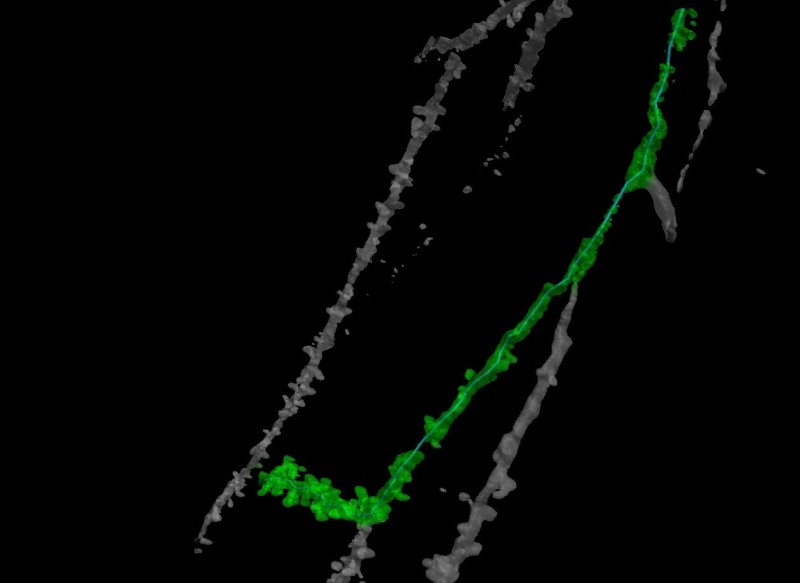
New research conducted by the Cajal Blue Brain project was focused on the analysis of morphological features extracted from dendritic spines of brain neurons to detect patterns in their distribution. Software was developed in order to convert these features into musical notes. This new technique will be able to explore new hypothesis to understand how human brain works and also search for new solutions to fight against diseases such as Alzheimer's, epilepsy and Parkinson's.
 Dendritic spines are key elements to understand cognition, memory and the synaptic organization of the cerebral cortex. This study is based on musical feedback for exploring dendritic spine morphology in pyramidal neurons to discover potential patterns in distributions of these structures. This is a hard task because of the irregular three-dimensional position of the spines, a high number of structures and also because of the dendritic shapes where the spines are found. In order to improve the analysis process of this data, the user can simultaneously explore the optical microscopy images along with symbolic visual data from images and musical sounds from the analyzed distributions. The musical exploration has allowed researchers to reveal some patterns which were completely hidden.
Dendritic spines are key elements to understand cognition, memory and the synaptic organization of the cerebral cortex. This study is based on musical feedback for exploring dendritic spine morphology in pyramidal neurons to discover potential patterns in distributions of these structures. This is a hard task because of the irregular three-dimensional position of the spines, a high number of structures and also because of the dendritic shapes where the spines are found. In order to improve the analysis process of this data, the user can simultaneously explore the optical microscopy images along with symbolic visual data from images and musical sounds from the analyzed distributions. The musical exploration has allowed researchers to reveal some patterns which were completely hidden.
This new exploratory tool for the dendritic spine morphology can help neuroscientists with their studies on brain structure. This tool can be used as a complement of other conventional data techniques. In particular, the expert can search for patterns in the distribution of these types of spines from three-dimensional images obtained from an optical microscopy. In a similar way, the expert will be able to interactively analyze the morphological features found in digital images of these structures, such as composition, volume, length, surface, orientation, etc. All this would be possible by the guide of sounds generated from a software tool which is able to turn these features into music notes.
The possibilities of this tool can be tested on the AUDISPINE website. The version on this website does not aim to be an interactive application with full functionality. Researchers are working to develop an application that can be distributed internationally. The available version includes a selection of morphological features to analyze and some interactive performances such as fixing the position of the analysis of the two available views (imaging and music); selecting the dendrite interest region and playing music at different speeds.

 Previous page
Previous page Back to top
Back to top







